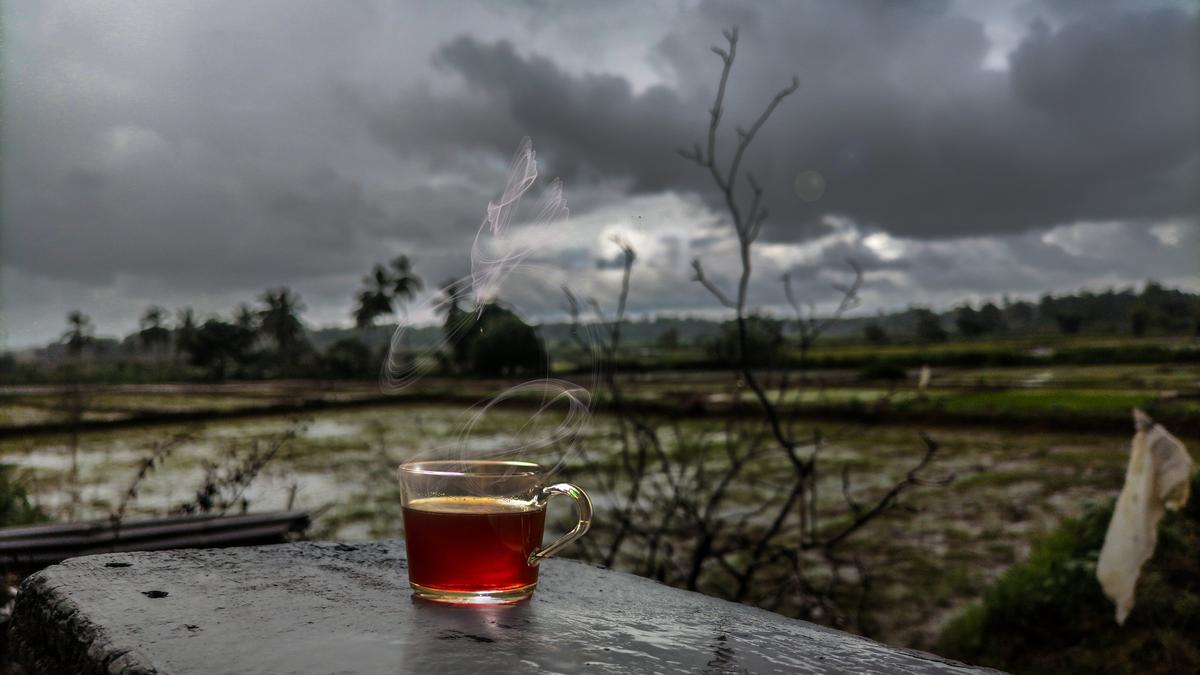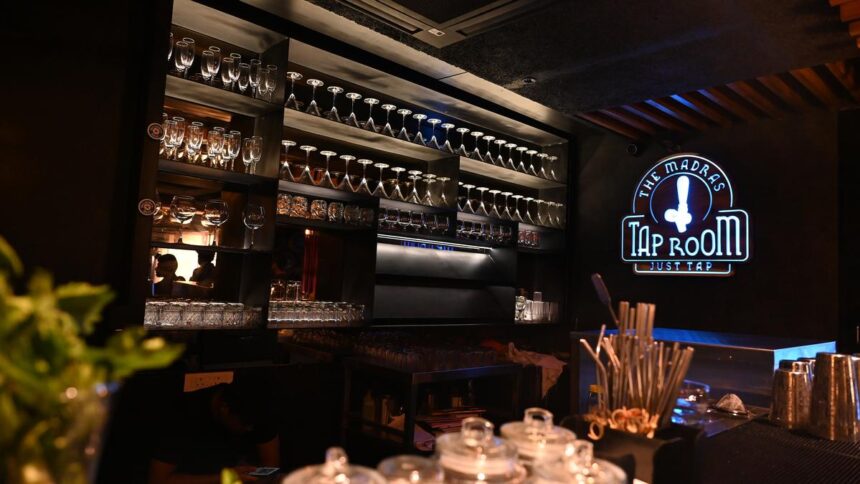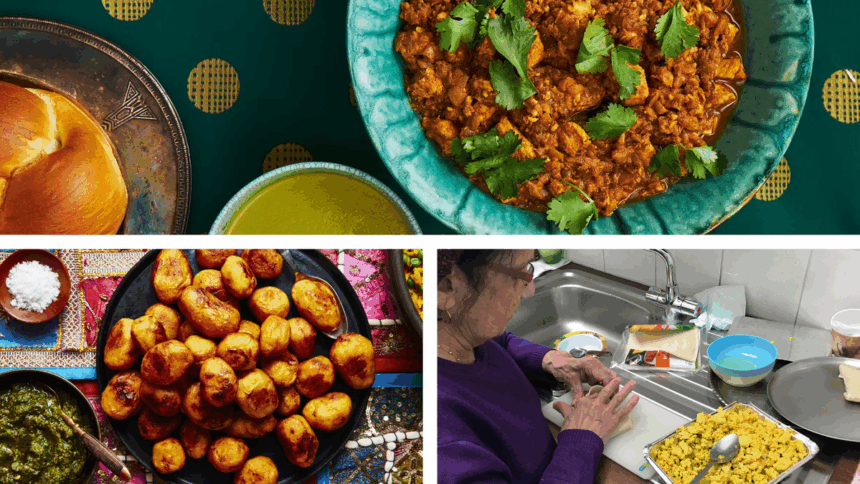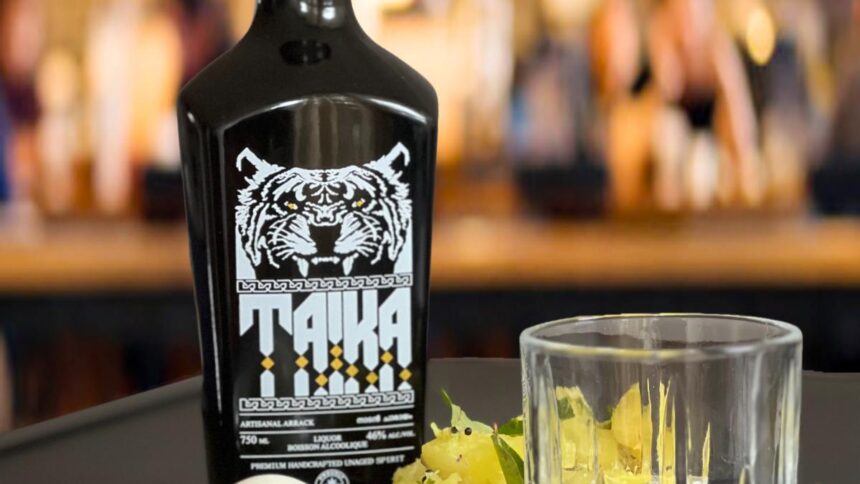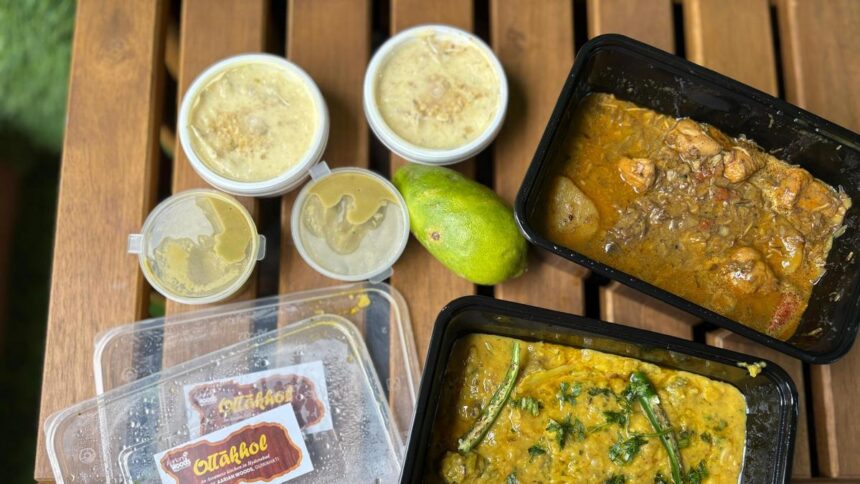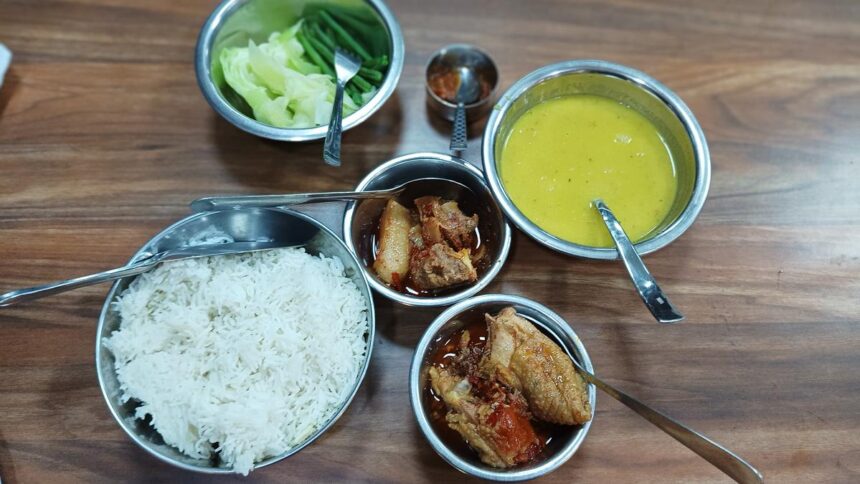Chef Harish Rao – HOSA, Goa
Goa is in the thick of its monsoon. And amidst the fragrance of petrichor, Chef Harish Rao’s kitchen is awash with the whiff of pepper rasam. “During the monsoon, I like something spicy and soothing,” says the chef who is originally from Chennai.
He likes to pair this rasam with mutton fry or curry. During this season he avoids sea food at home and instead has dry fish (karvadu). The karvadu mixed with baingan masala is one of his favourite dishes, and one that he often cooks during the rains. The dry fish or shrimp can also be made into sambal curry or thokku to add zing to a meal. Sometimes, even a simple omelette with the rasam can hit the spot, he says.
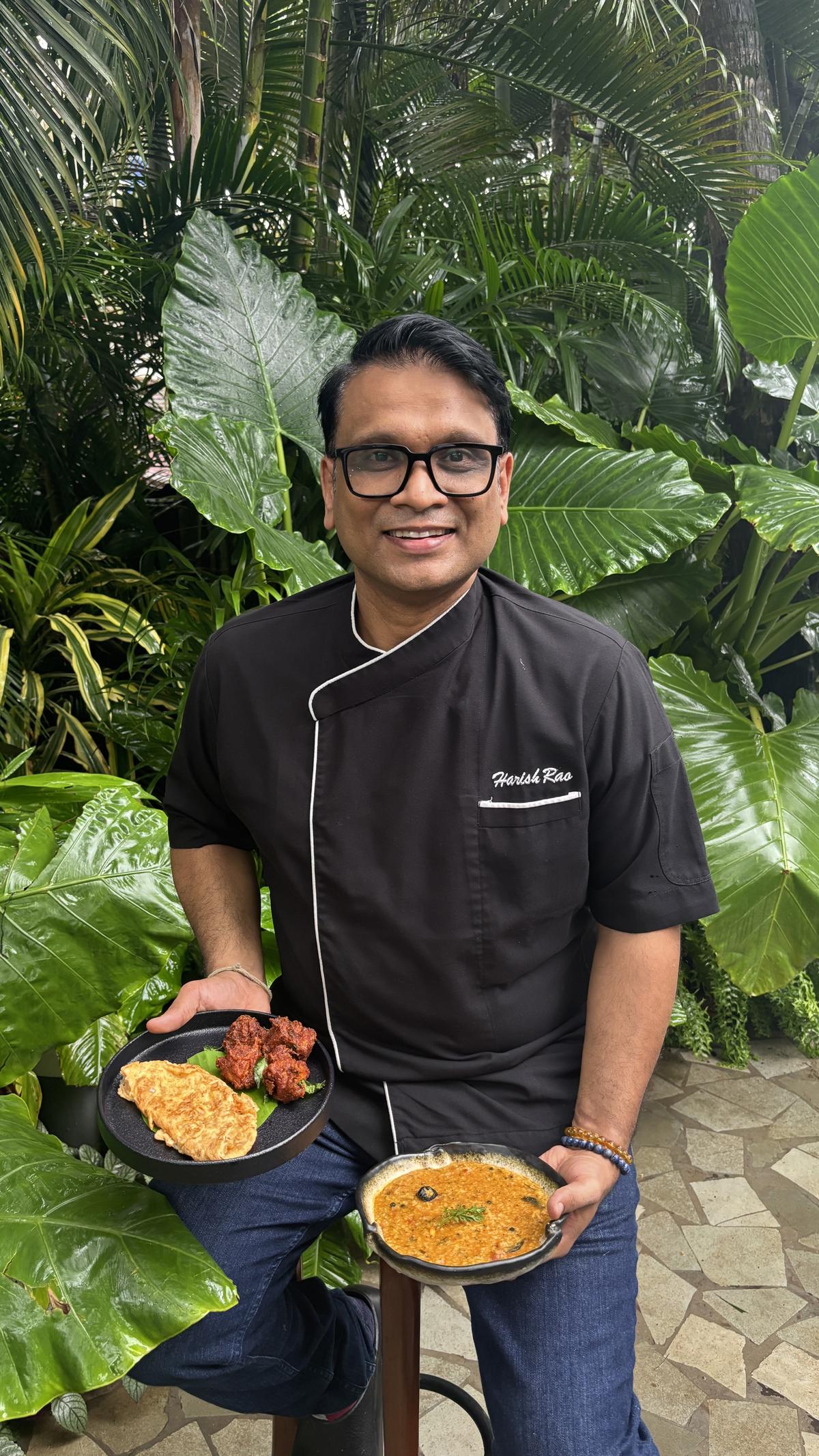
Chef Harish Rao with his favourite rasam rice, chicken fry, and omelette
| Photo Credit:
A hardcore non vegetarian, uppukandan (dry cured meat) is Chef Harish’s other go to. “The mutton is salted and sundried and then we make it into a curry. As for dessert, “A hot badam halwa to finish the meal,” he says.
Where do you like to eat during the monsoon?
To treat himself he goes to the local poi shops in Goa for pois with chicken and beef fillings. “I really enjoy the ros omelette that comes in a xacuti gravy along with meat. It is a monsoon favourite among the locals too,” he says, adding, “I can also live on chicken/prawn sui mais.” But what he misses in Goa are the local soup shops in Chennai that he used to frequent every time the skies turned dark grey. He says, “They do a mushroom soup and they put cornflakes, murukku or boondi on top. I’ve been craving that.”
Chef Nikhil Nagpal, Chef Culinaire, Avartana, ITC Grand Chola, Chennai
During the rains, Chef Nikhil Nagpal loves pazham pori, a dish introduced to him by his Malayali wife. But initially, I was only allowed to have it if I could pronounce the tongue twister of a name correctly,” he grins.
During this season I like something warm and crisp and the pazham pori fits the bill with a crisp exterior and warm, soft, gooey inside, he says.
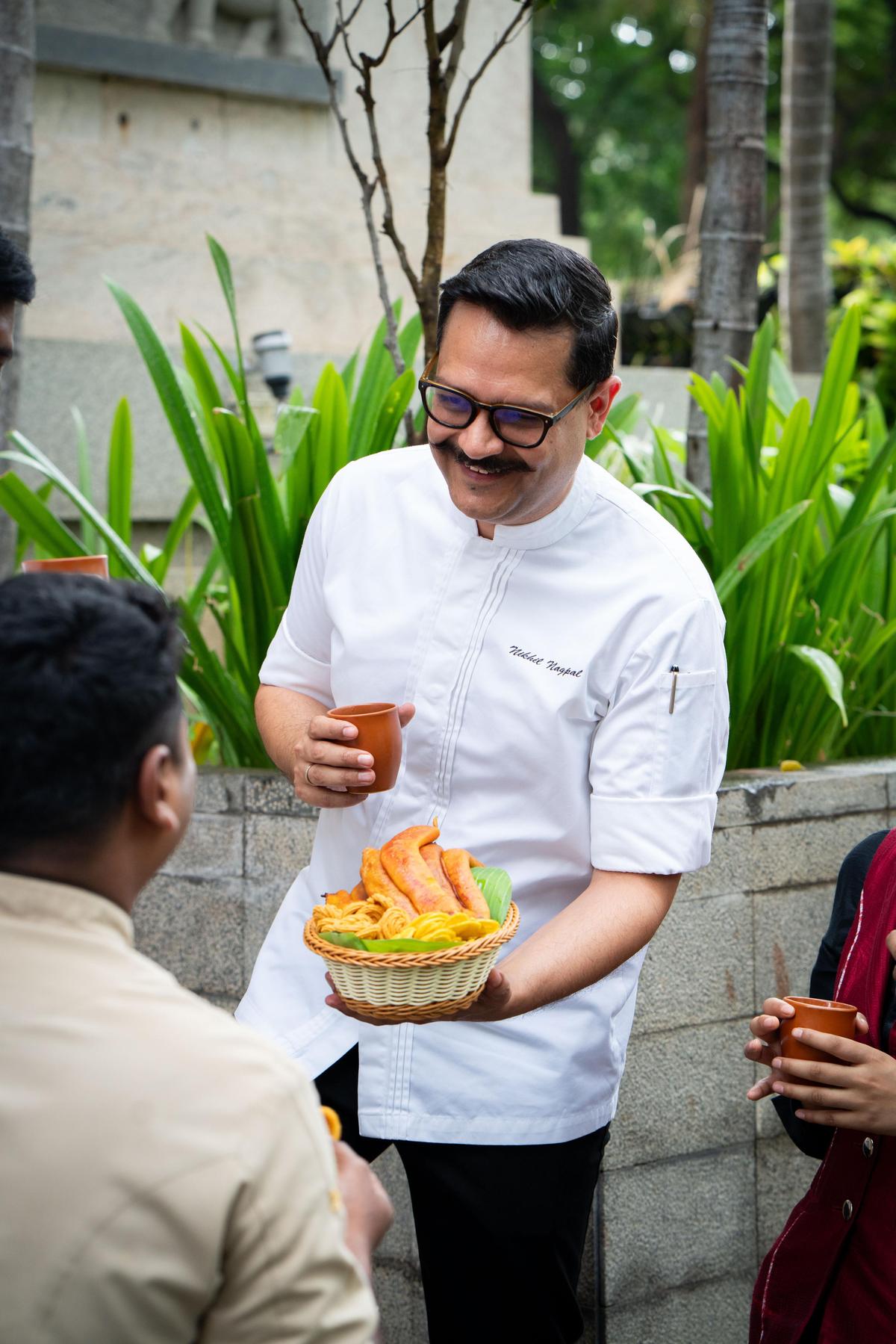
Chef Nikhil Nagpal indulging in fresh hot pazham pori
| Photo Credit:
“On the days I’m at home, my little gourmet critic (my 10-year-old daughter) wants something warm, cheesy, and, in her words, “fancy.” These are the moments I truly cherish — when I can cook a hearty bowl of risotto for her, watch her eyes light up, and listen to her chatter while sitting on the balcony, enjoying the rain,” he smiles. The risotto that he makes, he says, comes with a lot of cheese and bacon. The other recipe that he likes to whip up quickly is scrambled eggs, again with bacon and sausage.
“Monsoons for me are for cosy conversations and sharing the comfort food I’ve either grown up with or adapted to while staying in a city,” he says.
Where do you like to eat during the monsoon?
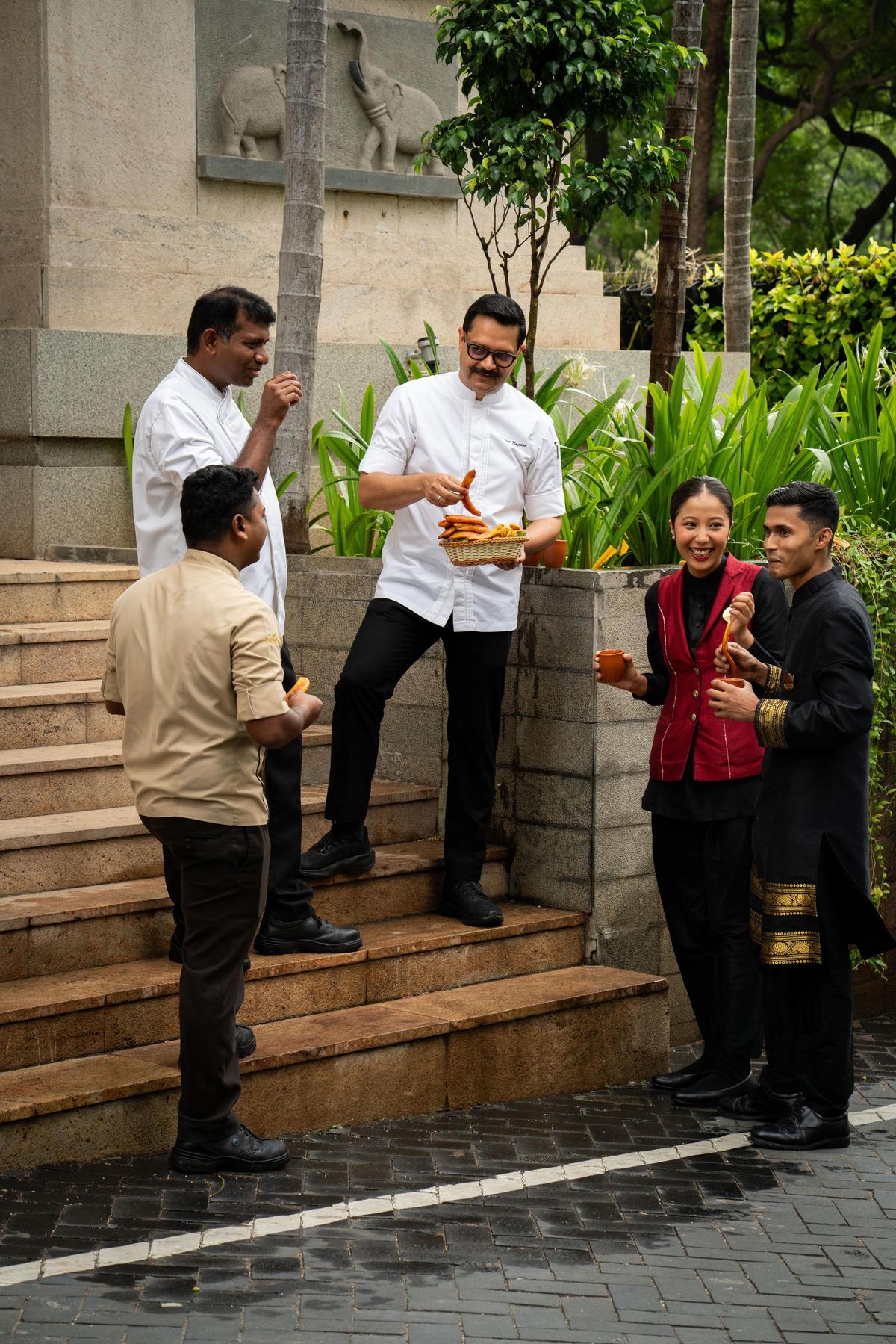
Most of Chef Nikhil’s childhood monsoons were spent at the foothills of Mussoorie. Now, whenever he gets the chance, he heads to Dehradun, where his parents live, and revisits his childhood monsoon favourites. All of them, still drive up the hills to have Maggi and momos. “In Dehradun, I have the famous chaat by the clock tower. Rains also bring out the Bittoo Tikku cart in Doon, and it’s a must-visit to have the bun tikki even if the water is ankle-deep and you’re standing in long queues. While there, the gourmand in me takes a break and the chatora (someone who loves spice, tang, and sweet) is reborn,” he says.
Chef Atul Lahkar, celebrity chef and author, Guwahati
When the skies open up, pithas are what Chef Atul Lahkar has on his mind. “We prefer to eat tekelipitha that is steamed at the mouth of a kettle. It’s made with hand-pound rice powder, stuffed with coconut and roasted black sesame seeds, and served with jaggery,” he explains.
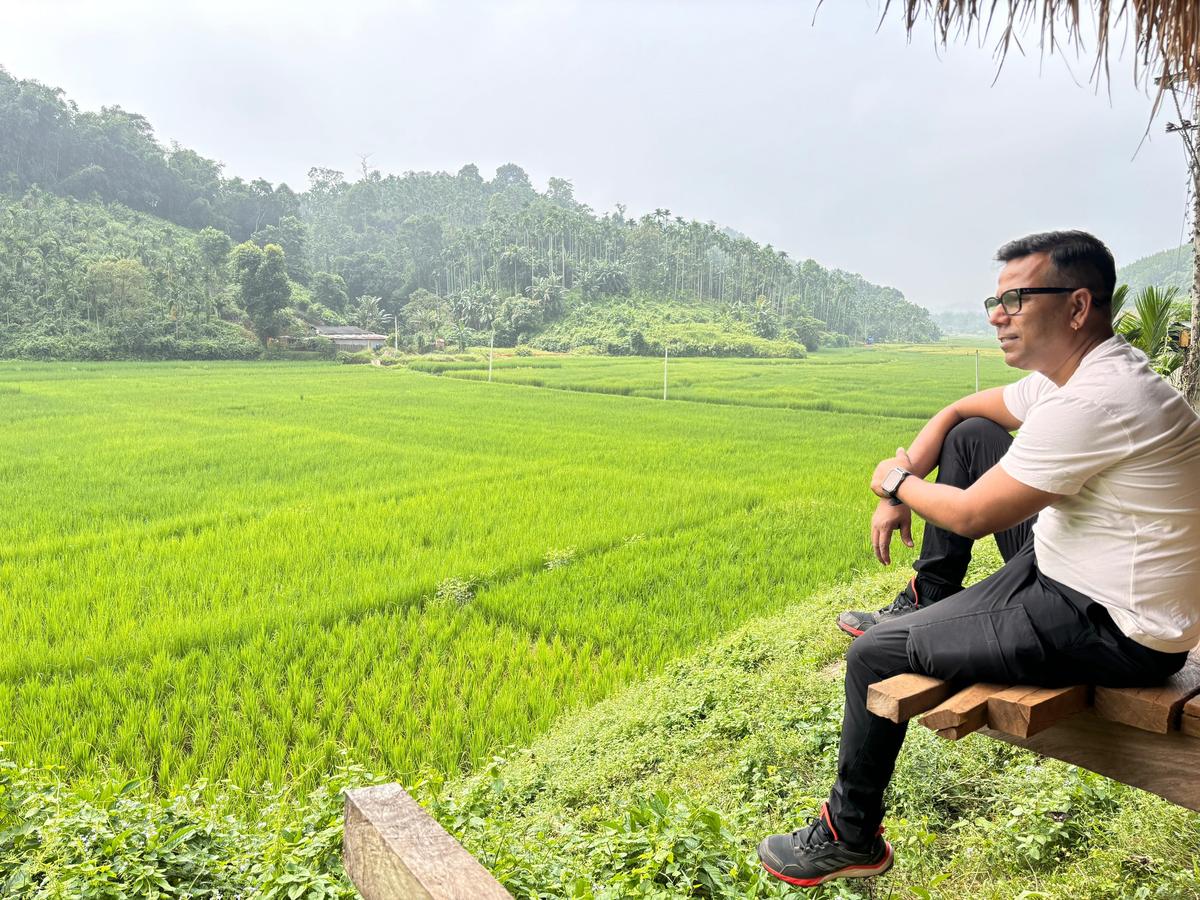
Chef Atul Lahkar
| Photo Credit:
“In Assam the monsoon is from April to September. Because of the high humidity and temperature, we prefer to eat light food and our cooking habits are different,” says the chef who owns restaurants like Hurum and Heritage Khorika in Guwahati.
On his monsoon cook list are pokoras. But different from other pakoras, he says. Made with black gram, it is cooked in a tangy curry with potato starch, lemon juice, and a fruit called thekera.
He adds, “The rains make us crave tangy flavours. From June, we get tenga fruit (elephant apple) that we are crazy about. We cook chicken, pork, and dal in it… We prefer sweet to salty dishes, says the chef. People like sticky rice, jaggery, and curd. “We call it bora saul jolpan.”
Where do you like to eat during the monsoon?
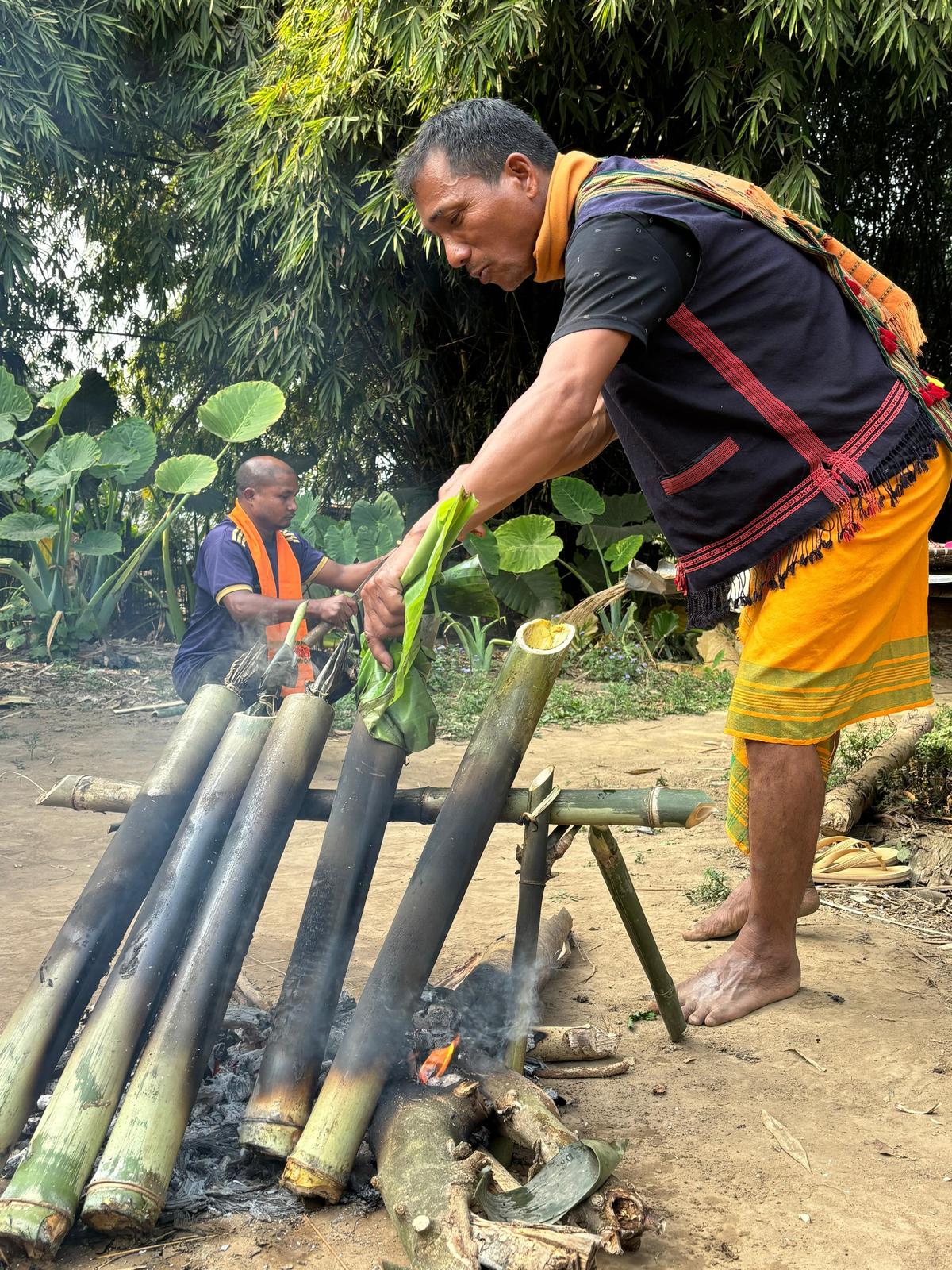
Food being cooked in bamboo
| Photo Credit:
“During monsoons, I prefer to go to the interiors of Assam and spend good time with the communities,” he says. He likes to understand the cooking techniques and what they do with the local ingredients. Each community has different types of recipes. “This is the time they prefer to cook bamboo shoots with vegetables, fish and pork. I enjoy rice cooked in bamboo hollow and with wild aromatic herbs, along with fish in bamboo hollow.”
Chef Auroni Mukherjee, entrepreneur, Kolkata
A copy writer-turned-chef, Chef Auroni Mukherjee was in advertising till 2016. Passionate about food, he used to train at Mumbai’s Cafe Zoe during the dinner shift, post work. In Kolkata he worked as a chef at Salt House, followed by a stint with Chef Ritu Dalmia, and then Sienna Store and Cafe before deciding to quit and start something on his own. “I want to start a chef-led hospitality company that is rooted in the city,” he says. He is busy working on his new set of restaurants, but meanwhile Auroni is enjoying Kolkata’s monsoon feasting on hilsa fish.
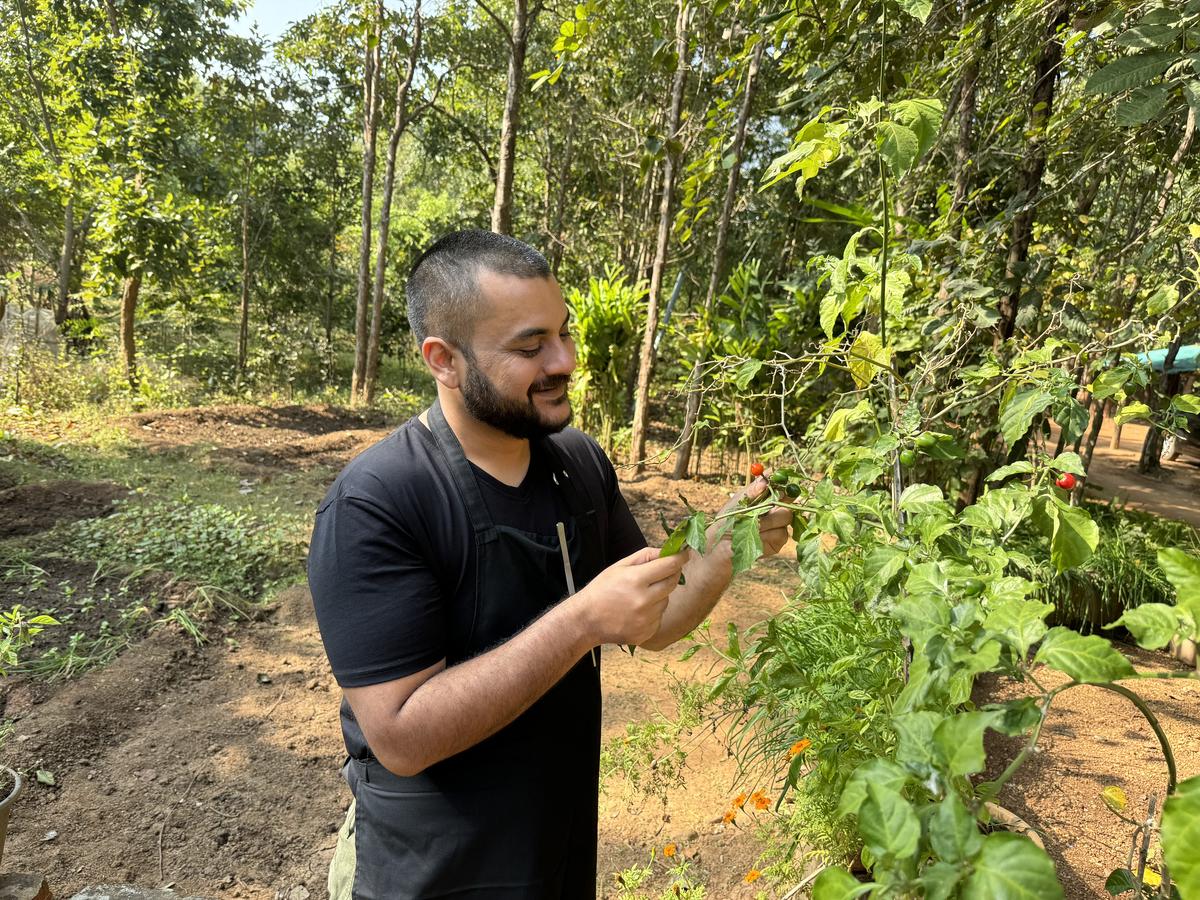
Chef Auroni Mukherjee
| Photo Credit:
“This is the only time of the year I eat hilsa — it is fresh and not from the freezer. I look forward to going to the baajaar and looking for a large one,” says the chef. This season is also when the fish have roe. “That’s why I love eating it this season. Dim bhora are the female fish with roe and tel bhora are the male fish with stomach fat, and one can choose what they like,” he explains. A lot of other fish like pabda and tangra too have roe around this time. “Macher dim (fish roe) is a beloved Bengali thing,” he adds.
Inspired by his grandmother’s recipes, Chef Auroni likes to make maach bhaaja and bhaapa at home. He also enjoys simple macher jhol with kalonji, ridge gourd, and brinjal.
The other dish he likes making during this time is the congee. A family favourite, it is something he learnt from his father. “Short grain, starchy rice is cooked in stock with little bit of ginger, garlic and onion. It’s boiled and then you can take anything from the fridge like leafy greens, or meat, and top it off with soy sauce and chilli oil.”
Where do you like to eat during the monsoon?
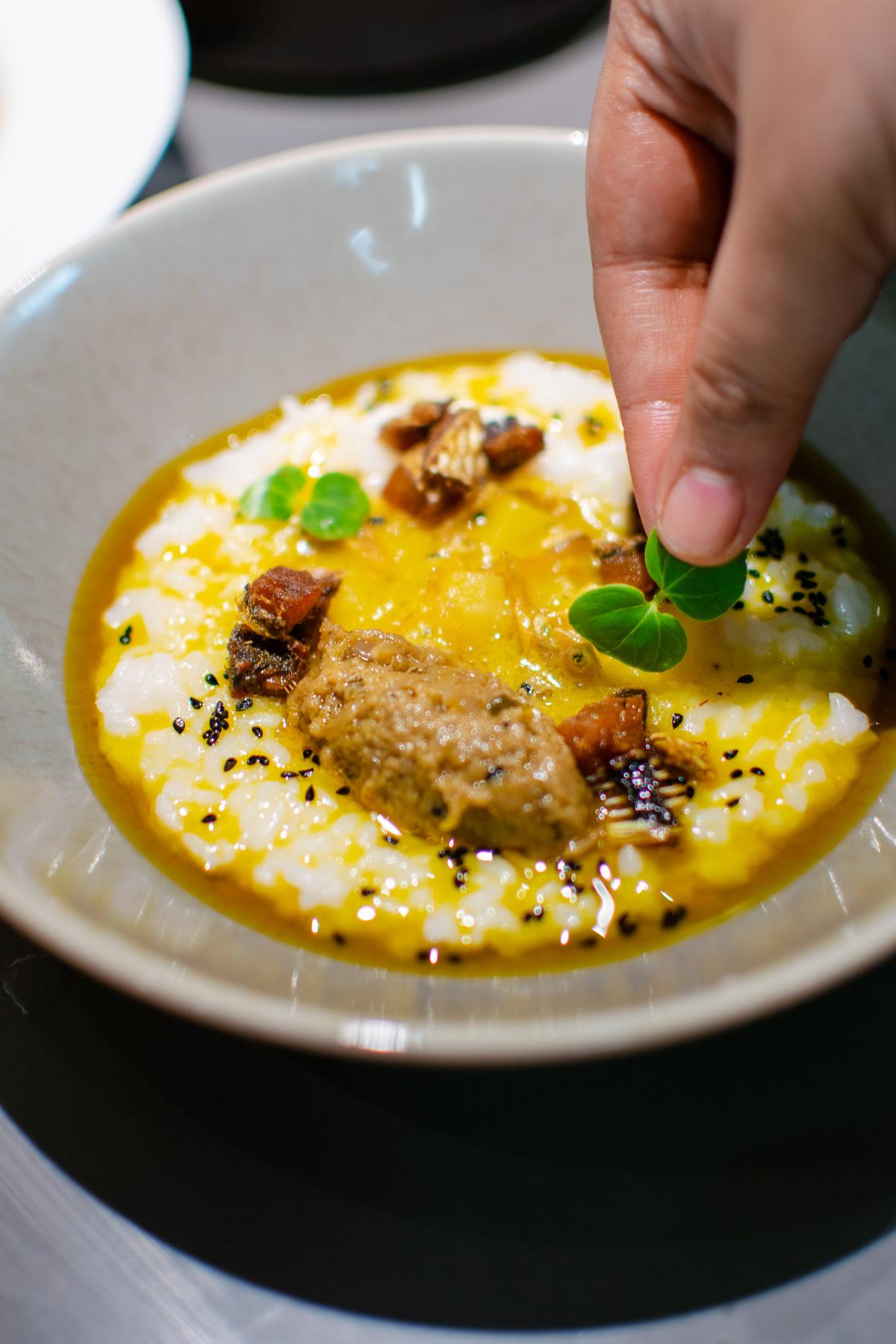
“During my Mumbai days, it was bombil fry and dal khichdi from Jai Hind. In Kolkata I go to Byloom Canteen for its mochar chop and luchi mangsho and to Campari for roll and fish fry. Monsoon makes me crave something deep fried,” he says. Then adds with a laugh, “I also like to order in biryani from Manzilat, and Salma The Chef. Her biryani is all the rage in Calcutta now, and Handi Biryani — it’s light and I don’t have to pop a Gelusil.”






